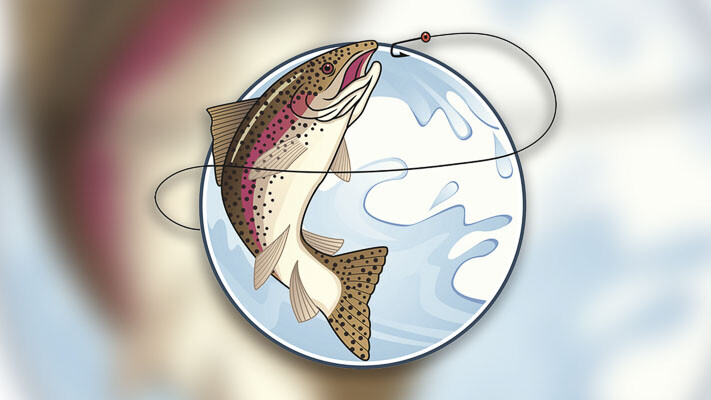
Todd Myers of the Washington Policy Center provides an analysis of the 2022 State of Salmon in Watershed report
Todd Myers
Washington Policy Center
Washington’s Salmon Recovery Office released the 2022 State of Salmon in Watersheds report and the report does a good job of highlighting the status of salmon populations and challenges of helping them recover.

Here are a few things that stood out.
Salmon are still struggling
The status of salmon across the state is basically unchanged since the previous report in 2020, with one stock improving and one getting worse. Compared to 2016, however, the status of salmon has declined. Part of the change is that assessments are based on the current status and can reflect near-term changes in ocean conditions and other short-term trends. It does emphasize the need to improve salmon populations so they can survive periods when conditions are unfavorable.
It took decades for salmon populations to decline and it will take decades to recover. It isn’t surprising there isn’t much change in the past two years, but it does highlight the need to take the threat to salmon more seriously.
Commercial and recreational salmon harvest levels are fairly low
Occasionally some argue that salmon harvests should be reduced or halted to help salmon recover. As the report notes, commercial and sport catch has declined since the early 1990s. Any further reduction would be close to a ban on harvesting.
Tribes have a treaty right to catch fish, so even if non-tribal harvest was stopped, it would only have a small impact on the overall population.

Seals and sea lions eat a lot of salmon
While the number of fish caught by tribes, commercial, and recreational fishers has declined, the number of fish eaten by seals and sea lions (collectively known as “pinnipeds”) has increased. As the report notes, “Between 1970 and 2015, seals and sea lions increased the amount of adult Chinook salmon they ate from 75 tons to 718 tons – double that of resident killer whales and six times more than the combined commercial and recreational catches.” (emphasis mine). That is remarkable.
The Washington State Academy of Sciences released a study earlier this year arguing the state should begin reducing seal and sea lion populations in key areas. The authors of the report noted that “pinniped predation is considered a primary driver of increasing mortality rates” of salmon. They went on to say that populations of marine mammals may be larger now than pre-settlement. Reducing the population of pinnipeds must be part of any recovery strategy.
Hatcheries play an important role in salmon recovery
The report notes bluntly that “Hatcheries are essential to meet tribal fishing obligations and to provide salmon for commercial and recreational fishing, orcas, and other wildlife.” This is correct and the claims that reducing hatchery production would help wild salmon is speculative and risky. Hatchery managers are taking steps to help ensure hatchery production does not compete with wild salmon. As the report states, “Most hatcheries in Washington that operate in areas with Endangered Species Act-listed salmon and steelhead operate under strict management protocols, known as Hatchery Genetic Management Plans, intended to allow hatcheries to produce young salmon while minimizing impacts to wild salmon.”
There has been an increase in hatchery production in recent years which is positive not only for preventing extirpation of salmon populations but providing fish to harvest for tribes, commercial, and sport fishers.
Private landowners are ahead of the state in opening stream habitat
The report notes that to comply with a court order to remove barriers to salmon habitat the state “fixed more than 100 barriers, opening 474 miles of habitat for salmon,” primarily benefiting coho and steelhead. They estimate an additional $3.6 billion will be needed to meet the court’s deadline.
By way of contrast the notes that “private landowners and state forestland managers in Washington have corrected more than 9,000 barriers.” Most of that was complete a decade ago and some of the habitat that could be opened by those activities is still blocked by the failure of the state to remove barriers downstream.
Legislators are not prioritizing salmon recovery
The report argues that one reason we aren’t making progress on recovery is a lack of funding. It notes that a study in 2011 estimated that we would need about $4.7 billion in funding to implement habitat improvement over the decade. Instead, funding was about $1.6 billion. Lamenting the lack of funding is a standard complaint about all government programs, so I have some skepticism about this number. However, it is clear that projects that would help recover salmon have not been funded and the Policy Center has been supportive of increasing funding for salmon recovery projects. The state has the revenue to increase funding but has simply chosen to prioritize other things.

Todd Myers is the director of the Center for the Environment at the Washington Policy Center.
Also read:
- Letter: ‘There will be consequences’Hazel Dell resident Bob Zak criticizes Democratic lawmakers for advancing ESSB 5181, arguing it undermines parental rights and defies biblical principles.
- Op-Ed: La Center Schools — Committed to families and their childrenIn a public letter, the La Center School Board and Superintendent Peter Rosenkranz affirm their commitment to supporting families and honoring both state law and community values amid state-level scrutiny.
- Letter: Mayor blames others on homelessness problem in Vancouver while she has enabled a lawless encampment zoneVancouver resident Peter Bracchi urges city leaders to enforce laws and end permissive policies that have allowed unsafe encampments to overrun public spaces near the Share House.
- Letter: ‘Look it up for yourself’Camas resident Anna Miller encourages skeptics of Elon Musk’s claims about government waste to do their own research using official resources.
- Opinion: Defending the indefensibleNancy Churchill argues that Washington’s lawsuit against a sheriff cooperating with ICE reveals a deeper political agenda that puts public safety at risk.











No mention of the commercial traffic on the Columbia River water trail?? Why not???
These tug boats that run up and down the Columbia River dump hundreds of gallons of oil in their wake (it’s how they cool down their engines). A quick visit to the West tip of Reed Island will give anyone interested, a picture of what that looks like. You can pick up a handful of sand and it is filled with oil droplets. Never mind the fact that the crawdads in this river are infested with huge parasites. The Columbia River is an open sewer!
In the old days, returning salmon used to make the river appear to run backwards.
Those days are long gone.
Hate to break your bubble, but it ISN’T oil “in” the water; it floats on the top. It’s first: the Salmon have been OVER FISHED since 1890 when my g-Grandfather was a shipping agent for the canneries out in Astoria. The Salmon have NEVER recovered. Then to add insult to injury, the Columbia is totally polluted with DRUGS. Think of all the dopers along the Columbia between the Canadian Border and Astoria. That crap DOES NOT come out of the water processed and discharged into the Columbia by the water treatment plants lining the Columbia River. It isn’t just the controlled pharmaceudicals; it’s ALSO ALL the anti-depressants, psychotrophics the kids are being poisoned with, and all the Adderol the focused and driven worldbeaters are using by the dump-truck load to try to stay ahead of the competition. All that crap is killing whatever Salmon manage to make it to the mouth of the river. But NOBODY wants to address this issue because everybody is wakked on krak.